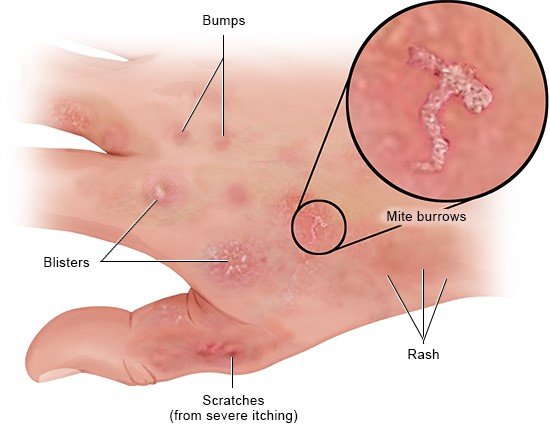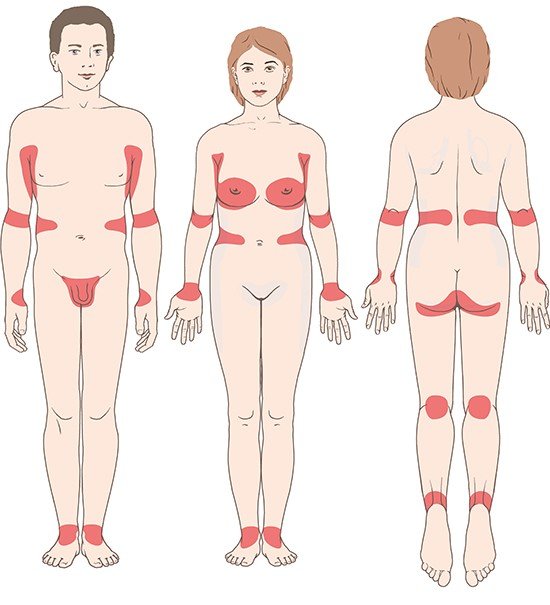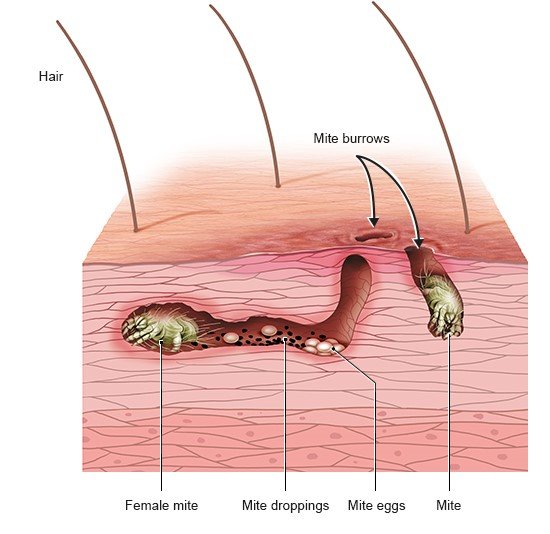Bundeszentrale für gesundheitliche Aufklärung (BZgA). Krätze (Skabies): Informationen über Krankheitserreger beim Menschen. 2018.
Centers for Disease Control and Prevention (CDC). Scabies: Frequently Asked Questions (FAQs). 2020.
Deutsche Dermatologische Gesellschaft (DDG). S1-Leitlinie zur Diagnostik und Therapie der Skabies. AWMF-Registernr.: 013-052. 2016.
Karimkhani C, Colombara DV, Drucker AM et al. The global burden of scabies: a cross-sectional analysis from the Global Burden of Disease Study 2015. Lancet Infect Dis 2017; 17(12): 1247-1254.
Leone PA. Scabies and pediculosis pubis: an update of treatment regimens and general review. Clin Infect Dis 2007; 44 Suppl 3: S153-159.
Leung AK, Lam JM, Leong KF. Scabies: A Neglected Global Disease. Curr Pediatr Rev 2020; 16(1): 33-42.
Markova A, Kam SA, Miller DD et al. In the clinic. Common cutaneous parasites. Ann Intern Med 2014; 161(5).
Pschyrembel Online. 2021.
Robert Koch-Institut (RKI). RKI-Ratgeber Skabies (Krätze). 2016.
Rosumeck S, Nast A, Dressler C. Ivermectin and permethrin for treating scabies. Cochrane Database Syst Rev 2018; (4): CD012994.
Salavastru CM, Chosidow O, Boffa MJ et al. European guideline for the management of scabies. J Eur Acad Dermatol Venereol 2017; 31(8): 1248-1253.
Sunderkötter C, Wohlrab J, Hamm H. Scabies: Epidemiology, Diagnosis, and Treatment. Dtsch Arztebl Int 2021 [Epub ahead of print].
Workowski KA, Bolan GA. Sexually transmitted diseases treatment guidelines, 2015. MMWR Recomm Rep 2015; 64(RR-03): 1-137.
IQWiG health information is written with the aim of helping people understand the advantages and disadvantages of the main treatment options and health care services.
Because IQWiG is a German institute, some of the information provided here is specific to the German health care system. The suitability of any of the described options in an individual case can be determined by talking to a doctor. informedhealth.org can provide support for talks with doctors and other medical professionals, but cannot replace them. We do not offer individual consultations.
Our information is based on the results of good-quality studies. It is written by a team of health care professionals, scientists and editors, and reviewed by external experts. You can find a detailed description of how our health information is produced and updated in our methods.




